A summery in english please!
Latest Thread
- UK Is there any British officer or British military personnel here that I can discuss with?
- Article Requirements for the Command and Control of the UK's Ground-Based Air Defence
- NATO Missile Defense Radar(Türkiye)
- Ukraine Construction of a defense line by the Ukrainian army
- MBDA to double the range of Aster 15 surface-to-air missiles with Aster 15 EC upgrade
You are using an out of date browser. It may not display this or other websites correctly.
You should upgrade or use an alternative browser.
You should upgrade or use an alternative browser.
MAM-T Range Figures
30km for UAV 200-250km/h @15-20k feet
60km for Hurkus-C 500-600km/h @ 30k feet
80km for Fighter 0.8-0.9 mach 40k feet.
Given ranges are minimum guaranteed ranges at that speed and altitude. Laser designator can paint targets up to 30km and 40-45k feet altitude. Optionally any other laser designator can do the work be it from other UAVs, fighters, ground troops, or ships.
Altitude effects range more than release speed.
There is a speed-altitude range chart which is only for service personnel (hizmete özel)
30km for UAV 200-250km/h @15-20k feet
60km for Hurkus-C 500-600km/h @ 30k feet
80km for Fighter 0.8-0.9 mach 40k feet.
Given ranges are minimum guaranteed ranges at that speed and altitude. Laser designator can paint targets up to 30km and 40-45k feet altitude. Optionally any other laser designator can do the work be it from other UAVs, fighters, ground troops, or ships.
Altitude effects range more than release speed.
There is a speed-altitude range chart which is only for service personnel (hizmete özel)
@TheInsider
What is warhead size on MAM-T? (if you can give that information)
What is warhead size on MAM-T? (if you can give that information)
@TheInsider
What is warhead size on MAM-T? (if you can give that information)
It's likely as what @anmdt stated earlier in the thread, warhead being that of TRG-230 as diameters fit and makes sense on the cost front of not having to develop a new warhead. TRG-230 warhead is 50kg. Let's wait on official specs.
AKSUNGUR AUAV successfully hit the target at a range of 30 km with the 340 kg KGK-SİHA-82, which it fired for the first time.
P.S. I think, the munition is modified for the use with AUAVs
P.S. I think, the munition is modified for the use with AUAVs
According to this info, it’s the same glide ratio. Then ~65km with Hürkuş@30000ft, ~100 km from F-16@40000ft looks possible from the stated launch altitudes and speeds. (Energy loss to drag not calculated, just rounded down the numbers, but since original is a worst case scenario, with the help of winds etc...)MAM-T Range Figures
30km for UAV 200-250km/h @15-20k feet
60km for Hurkus-C 500-600km/h @ 30k feet
80km for Fighter 0.8-0.9 mach 40k feet.
Given ranges are minimum guaranteed ranges at that speed and altitude. Laser designator can paint targets up to 30km and 40-45k feet altitude. Optionally any other laser designator can do the work be it from other UAVs, fighters, ground troops, or ships.
Altitude effects range more than release speed.
There is a speed-altitude range chart which is only for service personnel (hizmete özel)
Last edited:
No, wing area of MAM-T is slightly smaller and geometry of the bomb is not ideal(optimized for thermobaric warhead) compared to Aselsan miniature munition.
If a miniature bomb and MAM-T is released by an F-16 with the same velocity @40k feet altitude miniature bomb will glide further.
MAM-T warhead design is similar to number 6.

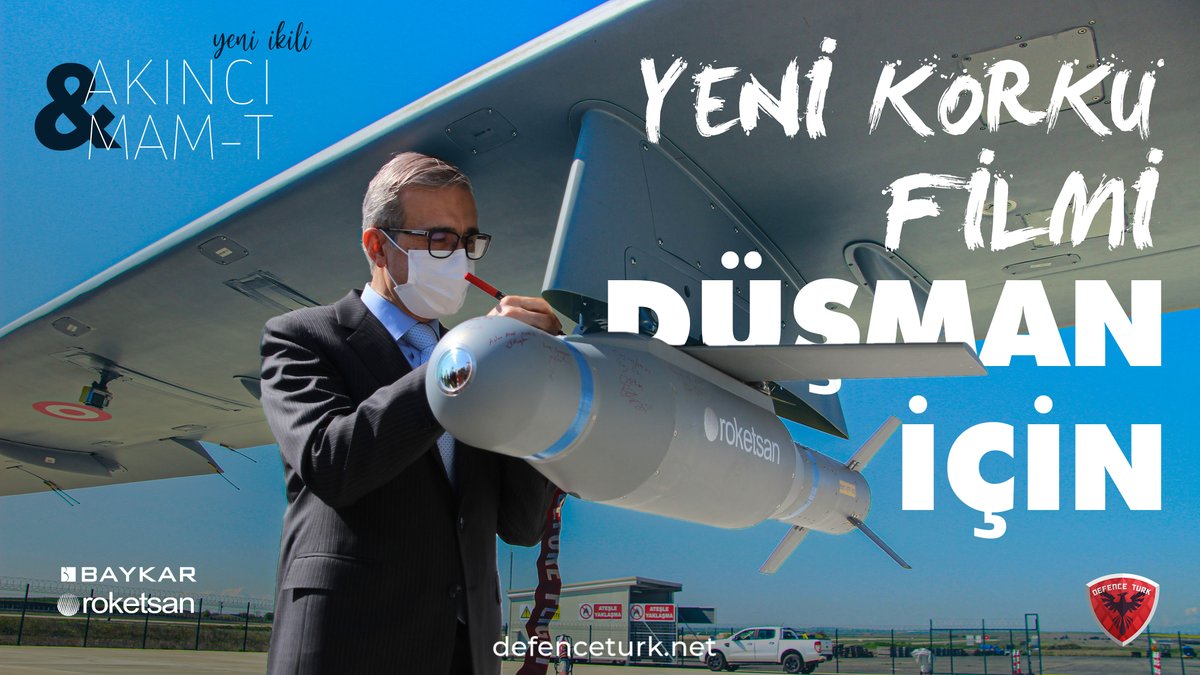
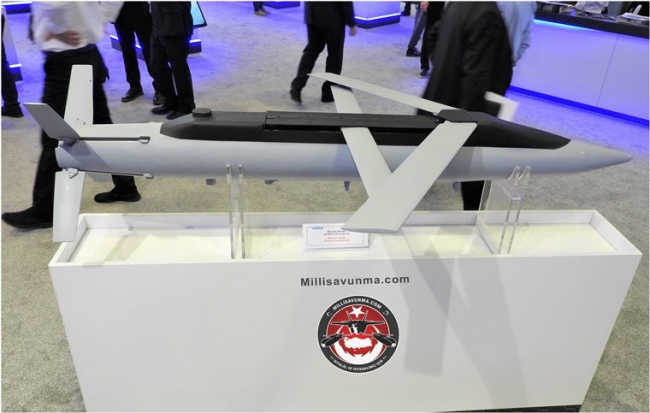
If a miniature bomb and MAM-T is released by an F-16 with the same velocity @40k feet altitude miniature bomb will glide further.
MAM-T warhead design is similar to number 6.



Last edited:
~100km is just my estimate for theoretical maximum range when launched from F-16, but energy losses are not factored in (which could be very high).No, wing area of MAM-T is slightly smaller and geometry of the bomb is not ideal(optimized for thermobaric warhead) compared to Aselsan miniature munition.
If a miniature bomb and MAM-T is released by an F-16 with the same velocity @40k feet altitude miniature bomb will glide further.
Miniature bomb actual range 101 km from 40.000ft by F-16
MAM-T theoretical range (=actual will be less....so real range will be more than 80 and less than 100km) ~100km from 40.000ft by [email protected] based on your post.
In your post you stated:
Did you notice glide ratios for those 3 altitudes are the same?MAM-T Range Figures
30km for UAV 200-250km/h @15-20k feet
60km for Hurkus-C 500-600km/h @ 30k feet
80km for Fighter 0.8-0.9 mach 40k feet.
Given ranges are minimum guaranteed ranges at that speed and altitude. Laser designator can paint targets up to 30km and 40-45k feet altitude. Optionally any other laser designator can do the work be it from other UAVs, fighters, ground troops, or ships.
Altitude effects range more than release speed.
There is a speed-altitude range chart which is only for service personnel (hizmete özel)
Ranges:
30km = 30.000 meters
60km = 60.000 meters
80km = 80.000 meters
Altitudes:
15000ft = 4572 meters
30000ft = 9144 meters
40000ft = 12192 meters
Glide ratio:
Distance travelled for altitude loss= distance/altitude
30000/4572 = 6,5616797900262467191601049868766
60000/9144 = 6,5616797900262467191601049868766
80000/12192 = 6,5616797900262467191601049868766
That means speed is not factored in as well. So assuming this ratio is for a slow speed UAV, from F-16 it should glide further (up to 100km for high subsonic).
The reverse can be also true, if for F-16 it is 80 km, the range will be less for an UAV at 15.000ft.
The glide ratio of 6.56 is worse than the glide ratio of miniature bomb (8.2 according to brochure) as I have written in previous posts.
Apparently they started the studies for jet-powered kamikaze experimenting on Simsek target drone. Revealed by Temel Kotil last night.I don't know whether it fits here or UAV section but loitering munition may come in two different configuration,
one is well known gas-piston engine powered
another is not-yet known jet-engine powered (TJ150 - TJ300)
the latter will rather be a cheap cruise missile with relatively slower speed than a cruise missile and lacking terrain hugging with radar altimeter but employing a similar technique via image processing.
the latter could be referring to kuzgun, however i am not sure yet.
We can easily assume there will be a dedicated jet- powered kamikaze in near future apart from decoy drones.
Is there a specific reason to go for TRG-230 rather than the TRG-122. Unless it is to achieve maximum damage and the price difference from 230 to 122 is rather small.
If they're working to succeed with 230 and still going to be using 122, then I'm cool with it.
If they're working to succeed with 230 and still going to be using 122, then I'm cool with it.
T
Turko
Guest
Let's translate abbreviations.
Kuzgun TJ : turbojet
Kuzgun KY: katı yakıt: solidfuel
Kuzgun S: glide.
SOM has been in TurAF service since 2011. The development and qualification of other SOM variants, SOM-C1/C2 with Anti-Ship and Datalink capability are continuing.
SOM-A Missile
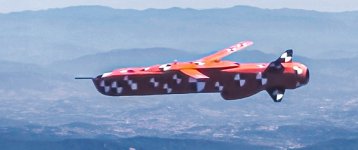
• Missile Weight ~ 1350 lb. (620 kg)
• High Explosive Blast-Fragmentation Warhead
• Global Positioning System (GPS)
• Inertial Navigation System (INS)
• Terrain Referenced Navigation (TRN)
SOM-B1 Missile
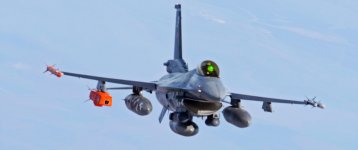
SOM-B1 is designed against soft targets similar to SOM-A. In addition, it has Imaging Infra-Red (IIR) seeker.
• Missile Weight ~ 1350 lb. (620 kg)
• High Explosive Blast-Fragmentation Warhead
• Global Positioning System (GPS)
• Inertial Navigation System (INS)
• Terrain Referenced Navigation (TRN)
• Imaging Infra-Red (IIR) Seeker
• Automatic Target Acquisition (ATA)
SOM-B2 Missile
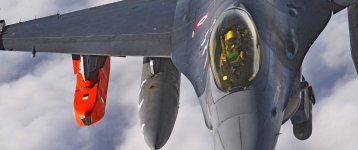
SOM-B2 is designed against hard targets. It has a Dual Stage Tandem Penetrating Warhead.
• Missile Weight ~1450 lb. (660 kg)
• Dual Stage Tandem Penetrating Warhead
• Global Positioning System (GPS)
• Inertial Navigation System (INS)
• Terrain Referenced Navigation (TRN)
• Imaging Infra-Red (IIR) Seeker
• Automatic Target Acquisition (ATA)
SOM-J Missile

SOM-J is the variant of the SOM Missile System Family specially designed for F-35 Joint Strike Fighter (JSF) internal/external carriage and used against highly defended, anti-access and high value stationary ground and moving maritime targets.
• Missile Weight ~1100 lb. (500 kg)
• Semi-Armor Piercing Warhead
• Global Positioning System (GPS)
• Inertial Navigation System (INS)
• Terrain Referenced Navigation (TRN)
• Imaging Infra-Red (IIR) Seeker
• Automatic Target Acquisition (ATA)
• Network Enabled Weapon (NEW) Capability
• Universal Armament Interface (UAI) Compatibility
• Off-Board, On-Board and In-Flight Mission Planning Capability
SOM-A Missile

• Missile Weight ~ 1350 lb. (620 kg)
• High Explosive Blast-Fragmentation Warhead
• Global Positioning System (GPS)
• Inertial Navigation System (INS)
• Terrain Referenced Navigation (TRN)
SOM-B1 Missile

SOM-B1 is designed against soft targets similar to SOM-A. In addition, it has Imaging Infra-Red (IIR) seeker.
• Missile Weight ~ 1350 lb. (620 kg)
• High Explosive Blast-Fragmentation Warhead
• Global Positioning System (GPS)
• Inertial Navigation System (INS)
• Terrain Referenced Navigation (TRN)
• Imaging Infra-Red (IIR) Seeker
• Automatic Target Acquisition (ATA)
SOM-B2 Missile

SOM-B2 is designed against hard targets. It has a Dual Stage Tandem Penetrating Warhead.
• Missile Weight ~1450 lb. (660 kg)
• Dual Stage Tandem Penetrating Warhead
• Global Positioning System (GPS)
• Inertial Navigation System (INS)
• Terrain Referenced Navigation (TRN)
• Imaging Infra-Red (IIR) Seeker
• Automatic Target Acquisition (ATA)
SOM-J Missile

SOM-J is the variant of the SOM Missile System Family specially designed for F-35 Joint Strike Fighter (JSF) internal/external carriage and used against highly defended, anti-access and high value stationary ground and moving maritime targets.
• Missile Weight ~1100 lb. (500 kg)
• Semi-Armor Piercing Warhead
• Global Positioning System (GPS)
• Inertial Navigation System (INS)
• Terrain Referenced Navigation (TRN)
• Imaging Infra-Red (IIR) Seeker
• Automatic Target Acquisition (ATA)
• Network Enabled Weapon (NEW) Capability
• Universal Armament Interface (UAI) Compatibility
• Off-Board, On-Board and In-Flight Mission Planning Capability
B
B1 and B2 has NEW capability with Meteksan Kement.SOM has been in TurAF service since 2011. The development and qualification of other SOM variants, SOM-C1/C2 with Anti-Ship and Datalink capability are continuing.
SOM-A Missile
View attachment 19340
• Missile Weight ~ 1350 lb. (620 kg)
• High Explosive Blast-Fragmentation Warhead
• Global Positioning System (GPS)
• Inertial Navigation System (INS)
• Terrain Referenced Navigation (TRN)
SOM-B1 Missile
View attachment 19341
SOM-B1 is designed against soft targets similar to SOM-A. In addition, it has Imaging Infra-Red (IIR) seeker.
• Missile Weight ~ 1350 lb. (620 kg)
• High Explosive Blast-Fragmentation Warhead
• Global Positioning System (GPS)
• Inertial Navigation System (INS)
• Terrain Referenced Navigation (TRN)
• Imaging Infra-Red (IIR) Seeker
• Automatic Target Acquisition (ATA)
SOM-B2 Missile
View attachment 19342
SOM-B2 is designed against hard targets. It has a Dual Stage Tandem Penetrating Warhead.
• Missile Weight ~1450 lb. (660 kg)
• Dual Stage Tandem Penetrating Warhead
• Global Positioning System (GPS)
• Inertial Navigation System (INS)
• Terrain Referenced Navigation (TRN)
• Imaging Infra-Red (IIR) Seeker
• Automatic Target Acquisition (ATA)
SOM-J Missile
View attachment 19343
SOM-J is the variant of the SOM Missile System Family specially designed for F-35 Joint Strike Fighter (JSF) internal/external carriage and used against highly defended, anti-access and high value stationary ground and moving maritime targets.
• Missile Weight ~1100 lb. (500 kg)
• Semi-Armor Piercing Warhead
• Global Positioning System (GPS)
• Inertial Navigation System (INS)
• Terrain Referenced Navigation (TRN)
• Imaging Infra-Red (IIR) Seeker
• Automatic Target Acquisition (ATA)
• Network Enabled Weapon (NEW) Capability
• Universal Armament Interface (UAI) Compatibility
• Off-Board, On-Board and In-Flight Mission Planning Capability
B
B1 and B2 has NEW capability with Meteksan Kement.
C1 and C2.
Let's translate abbreviations.
Kuzgun TJ : turbojet
Kuzgun KY: katı yakıt: solidfuel
Kuzgun S: glide.
Wouldn't Kuzgun-S be Sürü as in Swarm ?
SARB-83
1000 lb Penetrator Bomb

SARB-83 is a penetrator bomb, which is designed to be used against surface and underground targets. SARB-83 contains Multiple Warhead Systems (MWS) technology. SARB-83 has similar external geometry, guidance unit interfaces, mass, center of mass and inertia properties with Mk-83 General Purpose Bombs (GPB)
• High penetration performance at oblique impact angles and/or low impact velocities
• High fragmentation effect against secondary targets with pre-formed fragments utilized in Augmenting Charge design
• Usability against various target types
• Potential to be used with all guidance kits which are compatible with Mk-83 GPB
• Potential to be dropped from all aircrafts which can carry Mk-83 GPB
GENERAL PROPERTIES
• Length: 1860 mm
• Maximum Diameter: 356 mm
• Weight: 415 kg
• Follow Through Bomb: Aluminized Plastic Bonded Explosive
• Follow Through Bomb: FMU-152 A/B, TST-101
TYPICAL HARD TARGETS
Burıed Hard Targets
• Munitions Depots
• Underground Petrochemical Depots
• Bunkers
• Aircraft Shelters
• Command and Control Centres
Surface Targets
• Aircraft Runways
• Dams
• Bridges
• Critical Buildings
• Radar Antennas
• Stationary Air Defence Missile Sites
• Industrial Facilities
• Parked Aircrafts
GUIDANCE
SARB-83 has the potential to be used with all guidance kits which are compatible with Mk-83 GPB.
PLATFORMS
SARB-83 has the potential to be dropped from all aircrafts for which Mk-83 GPB is certified.
PENETRATION PERFORMANCE
1.8 m (35 MPa reinforced concrete)
1000 lb Penetrator Bomb

SARB-83 is a penetrator bomb, which is designed to be used against surface and underground targets. SARB-83 contains Multiple Warhead Systems (MWS) technology. SARB-83 has similar external geometry, guidance unit interfaces, mass, center of mass and inertia properties with Mk-83 General Purpose Bombs (GPB)
• High penetration performance at oblique impact angles and/or low impact velocities
• High fragmentation effect against secondary targets with pre-formed fragments utilized in Augmenting Charge design
• Usability against various target types
• Potential to be used with all guidance kits which are compatible with Mk-83 GPB
• Potential to be dropped from all aircrafts which can carry Mk-83 GPB
GENERAL PROPERTIES
• Length: 1860 mm
• Maximum Diameter: 356 mm
• Weight: 415 kg
• Types of Explosives
• Augmenting Charge: Plastic Bonded Explosive• Follow Through Bomb: Aluminized Plastic Bonded Explosive
• Fuse
• Augmenting Charge: ONUR-1 MOD4• Follow Through Bomb: FMU-152 A/B, TST-101
TYPICAL HARD TARGETS
Burıed Hard Targets
• Munitions Depots
• Underground Petrochemical Depots
• Bunkers
• Aircraft Shelters
• Command and Control Centres
Surface Targets
• Aircraft Runways
• Dams
• Bridges
• Critical Buildings
• Radar Antennas
• Stationary Air Defence Missile Sites
• Industrial Facilities
• Parked Aircrafts
GUIDANCE
SARB-83 has the potential to be used with all guidance kits which are compatible with Mk-83 GPB.
PLATFORMS
SARB-83 has the potential to be dropped from all aircrafts for which Mk-83 GPB is certified.
PENETRATION PERFORMANCE
1.8 m (35 MPa reinforced concrete)
40mm Mini Rocket has a
Max Range: 2.000m
Effective Range:100-600m





